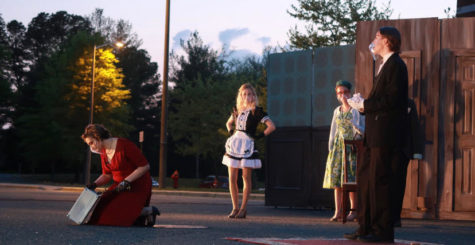Thanksgiving
The Mayflower carried 102 passengers to what they called The New World 396 years ago. Many on this journey were called Pilgrams. Pilgrams are travelers trying to move to a sacred place and spread their holy gospel throughout the world. 66 days later, the ship had arrived at the Hudson Bay, far north from the intended destination. A month later the mayflower traveled towards the Massachutes Bay where they began to work and establish the building of a colony. Throughout the first winter, many suffered from disease outbreaks. Only half of the original passengers lived to see spring. In November 1621, after the success of the pilgrams first harvest, Governor William Bradford organized a celebratory feast and invited a group of the fledgling colony’s Native American allies, including the chief. Since that day, it has been remembered as Thankgiving and this festival has lasted throughout the years.
Americans each year celebrate Thanksgiving on the 4th Thursday of November. Individuals travel to spend time with their families and come together each year for this special holiday. Sophomore, Niarah Nelson said, “I love Thanksgiving and my favorite tradition is eating at my grandmas house. I love mac and cheese, stuffing, and turkey.” Thanksgiving is also a meaningful day to reflect on your blessings and how faithful god has been in your life. Sophomore, Kaylee Dickerson said, “I eat sweet potato cassrole and my grandpa makes special rolls.” The traditional stuffed turkey is a must at every dinner table during the feast. Though historians don’t have an evidence to prove that turkey was eaten during the first Thanksgiving dinner. However, the Thanksgiving celebration would not complete without it. There are many gourmet dishes and add ons varying from family to family.
There are different cultures and many different diverse communities around the world. The Romans had a similar celebration in which they honored¬ Ceres, the goddess of corn. The Roman celebration included music, parades, games, sports and a feast, much like modern Thanksgiving. The ancient Chinese held a harvest festival called Chung Ch’ui to celebrate the harvest moon. Families would get together for a feast, which included round yellow cakes called “moon cakes.” Jewish families then eat their meals beneath the Sukkot (huts) under the night sky for eight days. The ancient Egyptians participated in a harvest festival in honor of Min, the god of vegetation and fertility. Parades, music and sports were a part of the festivities. On Lammas Day (what many Egyptians call their Thanksgiving), everyone would come to worship with a loaf of bread made from the first wheat harvest. The congregation would bless the bread, in thanks for that year’s harvest. There are many more traditions around the world and they will continue to change each and every year.

